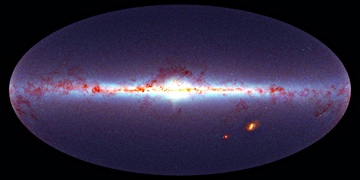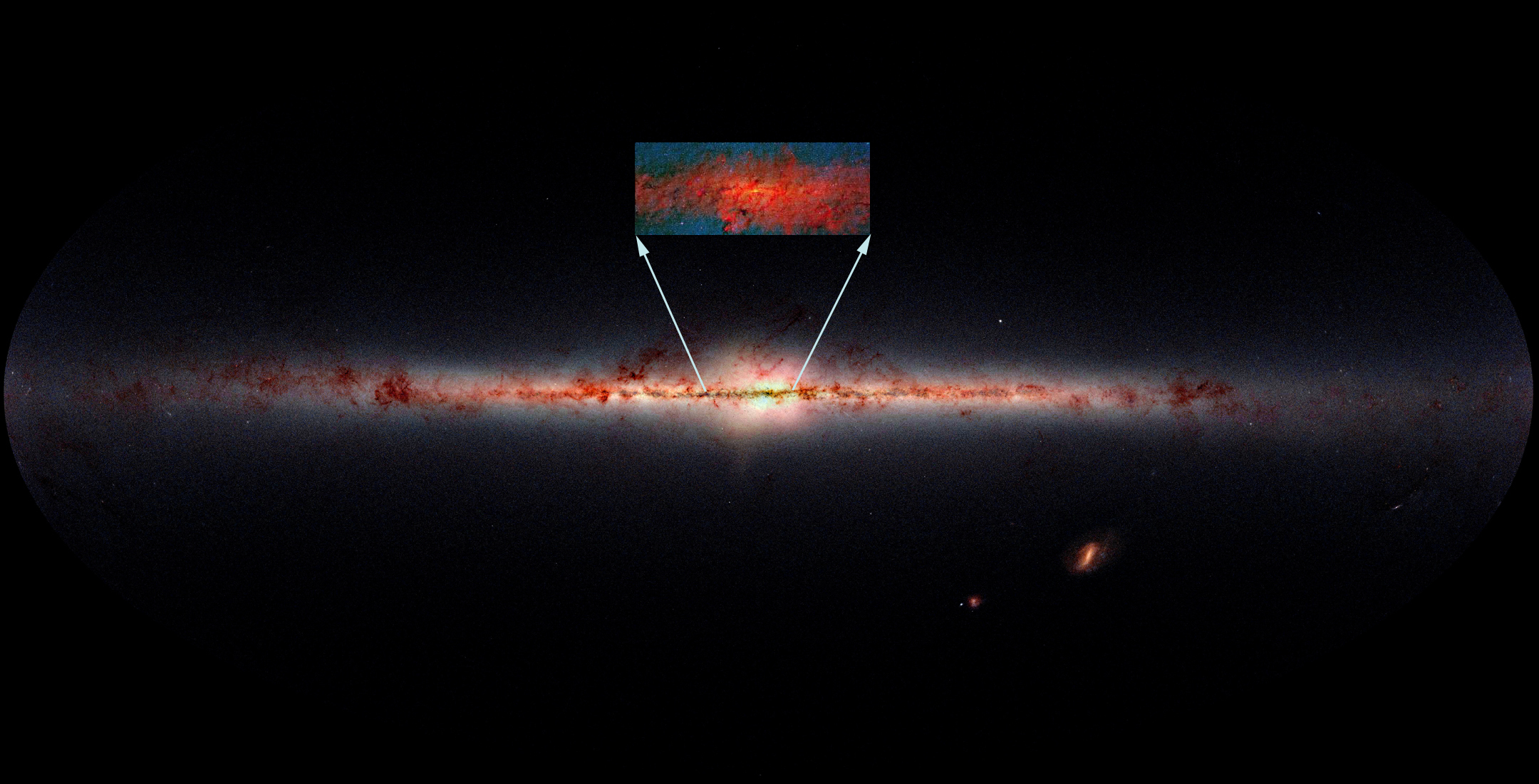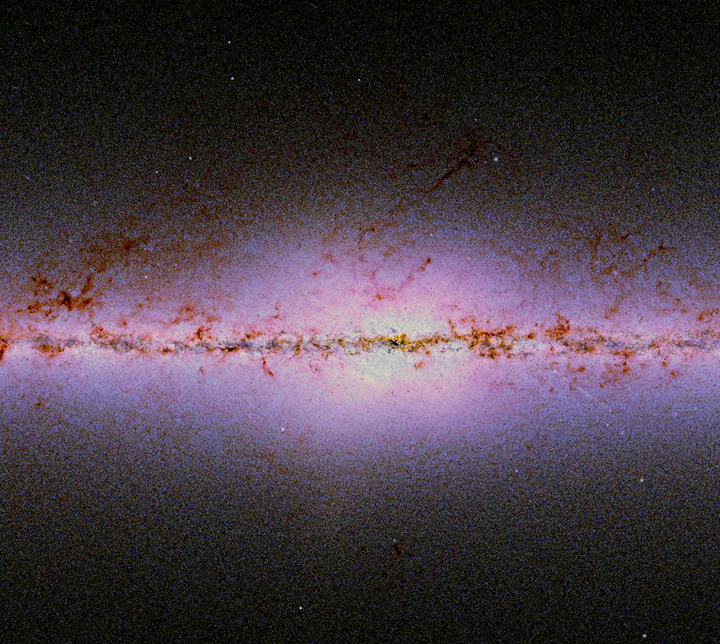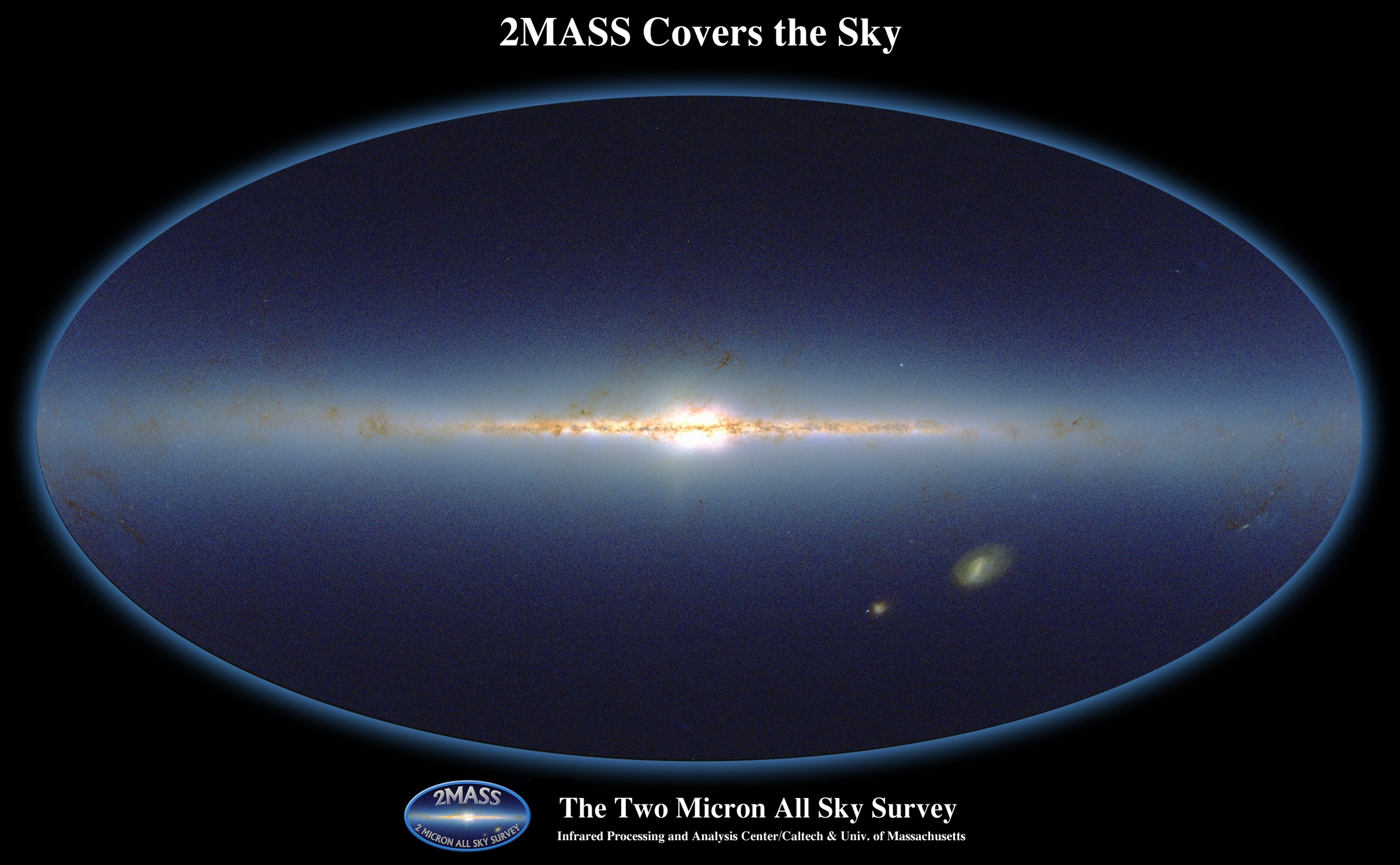Galactic Structure
m. cohen, t. jarrett
created June 7, 2001
revised Aug 22, 2001 (incorp M. Skrutskie's comments)
Roughly half of the sky is dominated by the Milky Way's 400 billion stars, many
of which are variable in the infrared.
With deep simultaneous
near- and mid-infrared observations, unique in an all-sky survey, the 4-color
NGSS will address global issues of Galactic stellar structure and populations:
the disk's warp and flare; the nature of the bar, Gould's Belt, ring, and
bulge; a detailed census of evolved stars; and the pursuit of halo star-streams
from globular clusters and unmerged Galactic dwarf satellites.
NGSS complements SIRTF's Legacy
Project, GLIMPSE, which will survey only 240 sq.deg. of the inner plane constrained to
|glat|<1 deg. NGSS will cover all the Galactic plane, and secure critical
offplane starcounts to probe the vertical population structure in the arms
and spurs, and scale heights of the central bar, molecular ring and bulge (disk
contamination diminishes rapidly off the plane).
Although the stellar counts are confusion limited near the Galactic plane with
NGSS's beam size and high sensitivity, the color-magnitude diagrams are
robust to confusion effects; and thus delineation of differing stellar populations is still
viable in the Galactic plane.
Offplane, unconstrained by confusion, NGSS offers unparalleled infrared survey
depth, uniquely capable of all-sky detection of even normal halo stars. The
``Spaghetti Survey" of the halo uses optical photometry and spectroscopy to
identify distant G-/K-giants and kinematic substructure caused by the destruction of accreted satellites. NGSS will aid the optical quest for extratidal KIIIs,
detecting such stars to 70 (at 3.5 um) and 45 kpc (at 4.7 um) from the sun, far
beyond the depth of 2MASS at K.
 Interpreting the optical spectra and NGSS data
on the quasi-continuum (3.5 um) and CO fundamental (4.7 um) in these cool stars
by synthetic spectra will enable the recognition of those stars that belong to
remnant stellar swarms from partly digested satellites.
The power of all-sky
surveys to highlight interloping populations is illustrated by 2MASS's view of the
Sgr dwarf galaxy protruding from our own Galactic Center. NGSS has the potential
to emphasize a host of new stellar swarms in the Galactic halo.
Interpreting the optical spectra and NGSS data
on the quasi-continuum (3.5 um) and CO fundamental (4.7 um) in these cool stars
by synthetic spectra will enable the recognition of those stars that belong to
remnant stellar swarms from partly digested satellites.
The power of all-sky
surveys to highlight interloping populations is illustrated by 2MASS's view of the
Sgr dwarf galaxy protruding from our own Galactic Center. NGSS has the potential
to emphasize a host of new stellar swarms in the Galactic halo.
fig. caption
Aitoff projection of the three-color composite 2MASS JHKs source count map of the entire sky
for Ks < 13.5 mag (~3 mJy).
(data courtesy of M. Skrutskie; color composite assembled by T. Jarrett).
Some additional images that might look good for this section:

JHKs allsky
with a zoomed portion of the GC region. The inset zoom shows a
combination between J (blue), K (green) and MSX Band A (red).
MSX Band A is 6-11 microns.

Galactic Center region

Official 2MASS Allsky Image (this is Skrutskie's favorite pic)
 Interpreting the optical spectra and NGSS data
on the quasi-continuum (3.5 um) and CO fundamental (4.7 um) in these cool stars
by synthetic spectra will enable the recognition of those stars that belong to
remnant stellar swarms from partly digested satellites.
The power of all-sky
surveys to highlight interloping populations is illustrated by 2MASS's view of the
Sgr dwarf galaxy protruding from our own Galactic Center. NGSS has the potential
to emphasize a host of new stellar swarms in the Galactic halo.
Interpreting the optical spectra and NGSS data
on the quasi-continuum (3.5 um) and CO fundamental (4.7 um) in these cool stars
by synthetic spectra will enable the recognition of those stars that belong to
remnant stellar swarms from partly digested satellites.
The power of all-sky
surveys to highlight interloping populations is illustrated by 2MASS's view of the
Sgr dwarf galaxy protruding from our own Galactic Center. NGSS has the potential
to emphasize a host of new stellar swarms in the Galactic halo.


